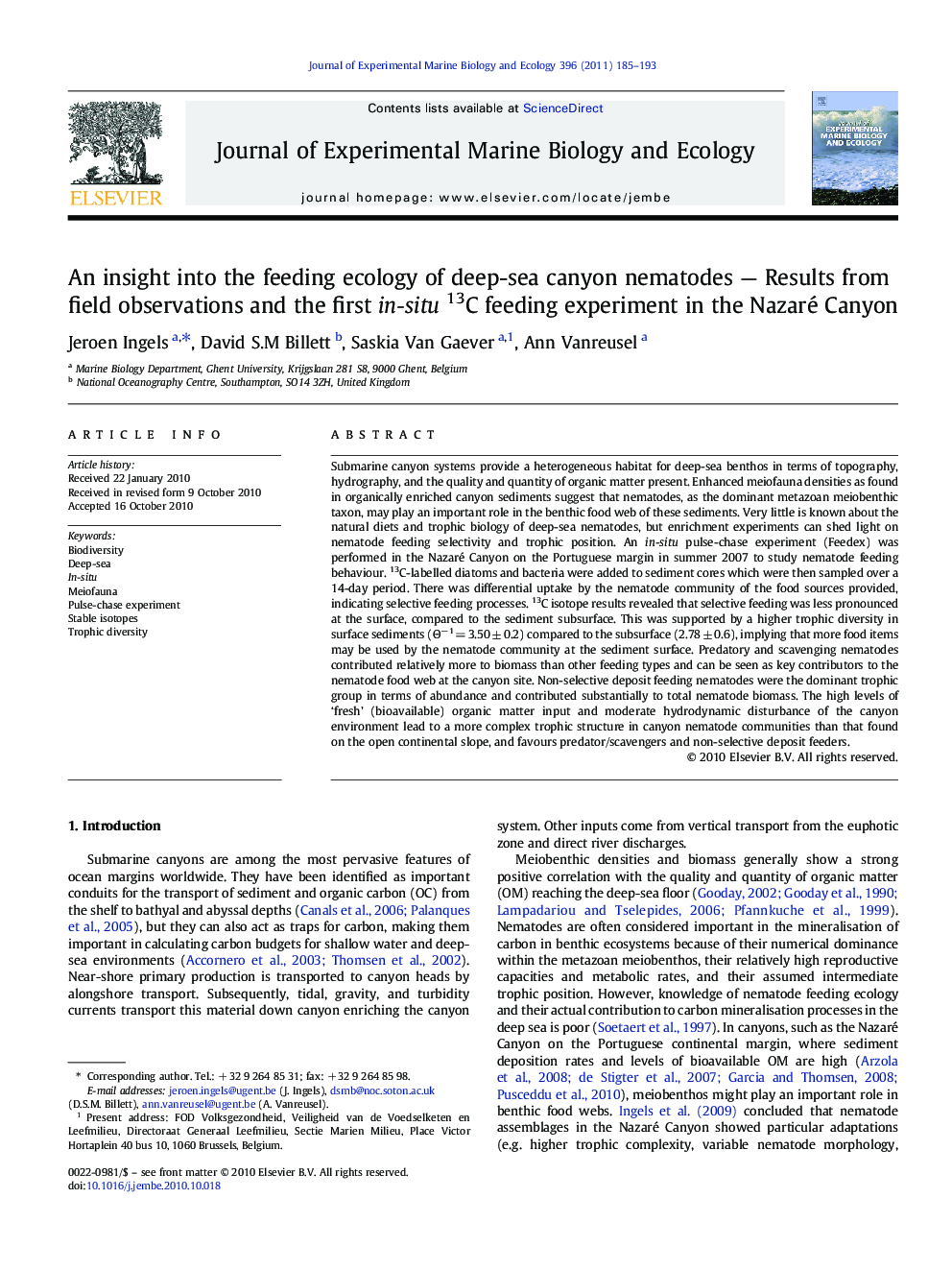| کد مقاله | کد نشریه | سال انتشار | مقاله انگلیسی | نسخه تمام متن |
|---|---|---|---|---|
| 6304594 | 1305822 | 2011 | 9 صفحه PDF | دانلود رایگان |
عنوان انگلیسی مقاله ISI
An insight into the feeding ecology of deep-sea canyon nematodes - Results from field observations and the first in-situ 13C feeding experiment in the Nazaré Canyon
دانلود مقاله + سفارش ترجمه
دانلود مقاله ISI انگلیسی
رایگان برای ایرانیان
کلمات کلیدی
موضوعات مرتبط
علوم زیستی و بیوفناوری
علوم کشاورزی و بیولوژیک
علوم آبزیان
پیش نمایش صفحه اول مقاله

چکیده انگلیسی
Submarine canyon systems provide a heterogeneous habitat for deep-sea benthos in terms of topography, hydrography, and the quality and quantity of organic matter present. Enhanced meiofauna densities as found in organically enriched canyon sediments suggest that nematodes, as the dominant metazoan meiobenthic taxon, may play an important role in the benthic food web of these sediments. Very little is known about the natural diets and trophic biology of deep-sea nematodes, but enrichment experiments can shed light on nematode feeding selectivity and trophic position. An in-situ pulse-chase experiment (Feedex) was performed in the Nazaré Canyon on the Portuguese margin in summer 2007 to study nematode feeding behaviour. 13C-labelled diatoms and bacteria were added to sediment cores which were then sampled over a 14-day period. There was differential uptake by the nematode community of the food sources provided, indicating selective feeding processes. 13C isotope results revealed that selective feeding was less pronounced at the surface, compared to the sediment subsurface. This was supported by a higher trophic diversity in surface sediments (Îâ1 = 3.50 ± 0.2) compared to the subsurface (2.78 ± 0.6), implying that more food items may be used by the nematode community at the sediment surface. Predatory and scavenging nematodes contributed relatively more to biomass than other feeding types and can be seen as key contributors to the nematode food web at the canyon site. Non-selective deposit feeding nematodes were the dominant trophic group in terms of abundance and contributed substantially to total nematode biomass. The high levels of 'fresh' (bioavailable) organic matter input and moderate hydrodynamic disturbance of the canyon environment lead to a more complex trophic structure in canyon nematode communities than that found on the open continental slope, and favours predator/scavengers and non-selective deposit feeders.
ناشر
Database: Elsevier - ScienceDirect (ساینس دایرکت)
Journal: Journal of Experimental Marine Biology and Ecology - Volume 396, Issue 2, 1 January 2011, Pages 185-193
Journal: Journal of Experimental Marine Biology and Ecology - Volume 396, Issue 2, 1 January 2011, Pages 185-193
نویسندگان
Jeroen Ingels, David S.M Billett, Saskia Van Gaever, Ann Vanreusel,